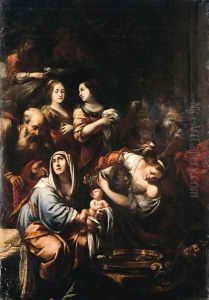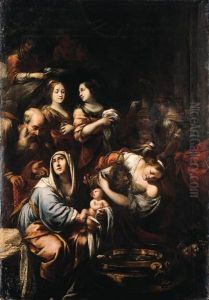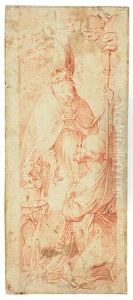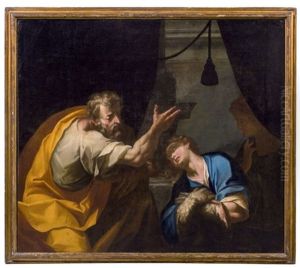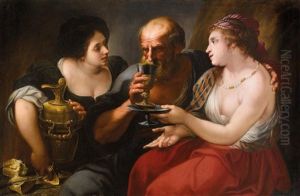Antonio Busca Paintings
Antonio Busca was an Italian painter of the Baroque period, born in 1625 in Milan, then part of the Spanish Empire. His artistic journey is emblematic of the vibrant cultural milieu of 17th-century Italy, a time when Baroque art flourished in response to the Counter-Reformation's call for emotionally engaging and visually intricate works. Although not as widely recognized as some of his contemporaries, Busca's contributions to the Baroque movement, particularly within Milan and its environs, are notable for their dynamic compositions and vigorous use of color.
Busca's training and early influences are somewhat obscure, but it is believed that he was a pupil of Daniele Crespi, a prominent Milanese painter, which helped him develop a style that combined pious themes with a lively and detailed approach to painting. After Crespi's untimely death, Busca's style evolved under the broader influences of the Baroque movement, incorporating elements of drama and a more pronounced use of chiaroscuro, a technique popularized by Caravaggio. This method of using stark contrasts between light and dark to achieve a sense of volume and depth became a hallmark of Busca's work.
Throughout his career, Busca was active mainly in Milan and the surrounding Lombardy region, where he executed a number of significant commissions for local churches and noble families. His oeuvre includes altarpieces, frescoes, and religious canvases, which often depicted scenes from the life of Christ, the Virgin Mary, and the saints. Notably, his works are characterized by their vibrant colors, dynamic figures, and detailed landscapes, elements that contributed to the emotional intensity and visual appeal of his paintings.
Despite his contributions to the Baroque movement in Northern Italy, Antonio Busca did not gain the same level of fame as some of his contemporaries. However, his work has been reevaluated by art historians in recent years, recognizing his role in the development of the Baroque style in Lombardy. Busca's paintings are now appreciated for their artistic merit and for providing insight into the religious and cultural contexts of 17th-century Italy. He passed away in 1686 in Milan, leaving behind a body of work that continues to be studied and admired for its contribution to the Baroque aesthetic.
